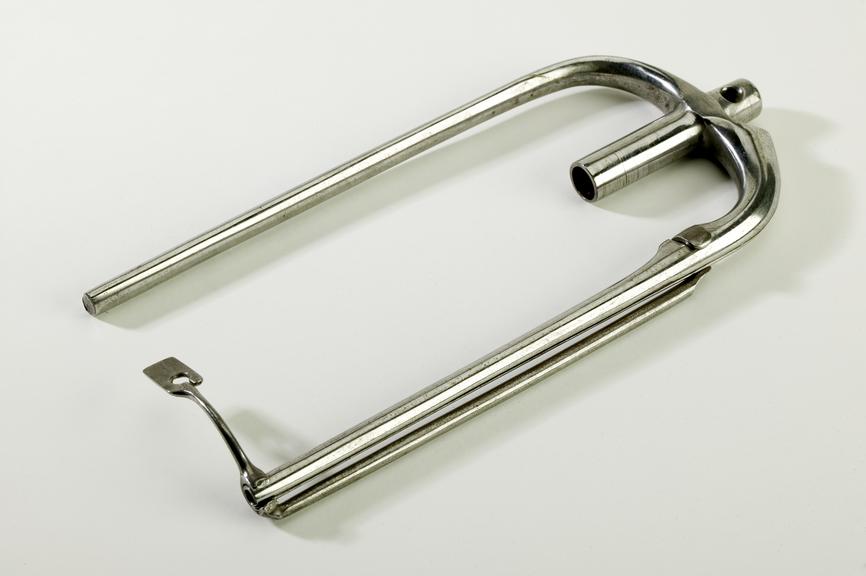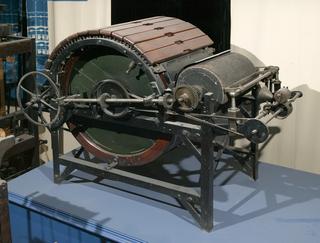
Flyer from a speed frame textile machine
- PART OF:
- Lancashire textile industry material
- Made:
- 1900 - 1950 in unknown place




Flyer from a speed frame textile machine
Flyers like this were used on textile machines called speed frames. Speed frames convert untwisted cotton fibres called slivers into low twisted strands called roving, ready to be spun into long, thin, strong yarn.
The flyer adds twist to cotton slivers as the thread is wound onto the rotating bobbins, twisting the cotton fibres together as it does so. The flyer rotates and moves up and down the full height of the central spindle. The amount of thread wound onto the bobbin and the degree of twist of the thread depends on how fast the flyer and the spindle rotate.
Adding twist to cotton fibres is needed to produce strong, durable, consistent and fine thread to create cotton cloth.
The mechanisation of the cotton yarn process, using parts like this flyer, meant hundreds of machines could be working away in factories rather than individual workers spinning on spinning wheels in their homes.
Details
- Category:
- Textile Industry
- Object Number:
- Y2006.35.3
- Materials:
- metal
- Measurements:
-
overall: 270 mm x 40 mm x 120 mm, 441 g




